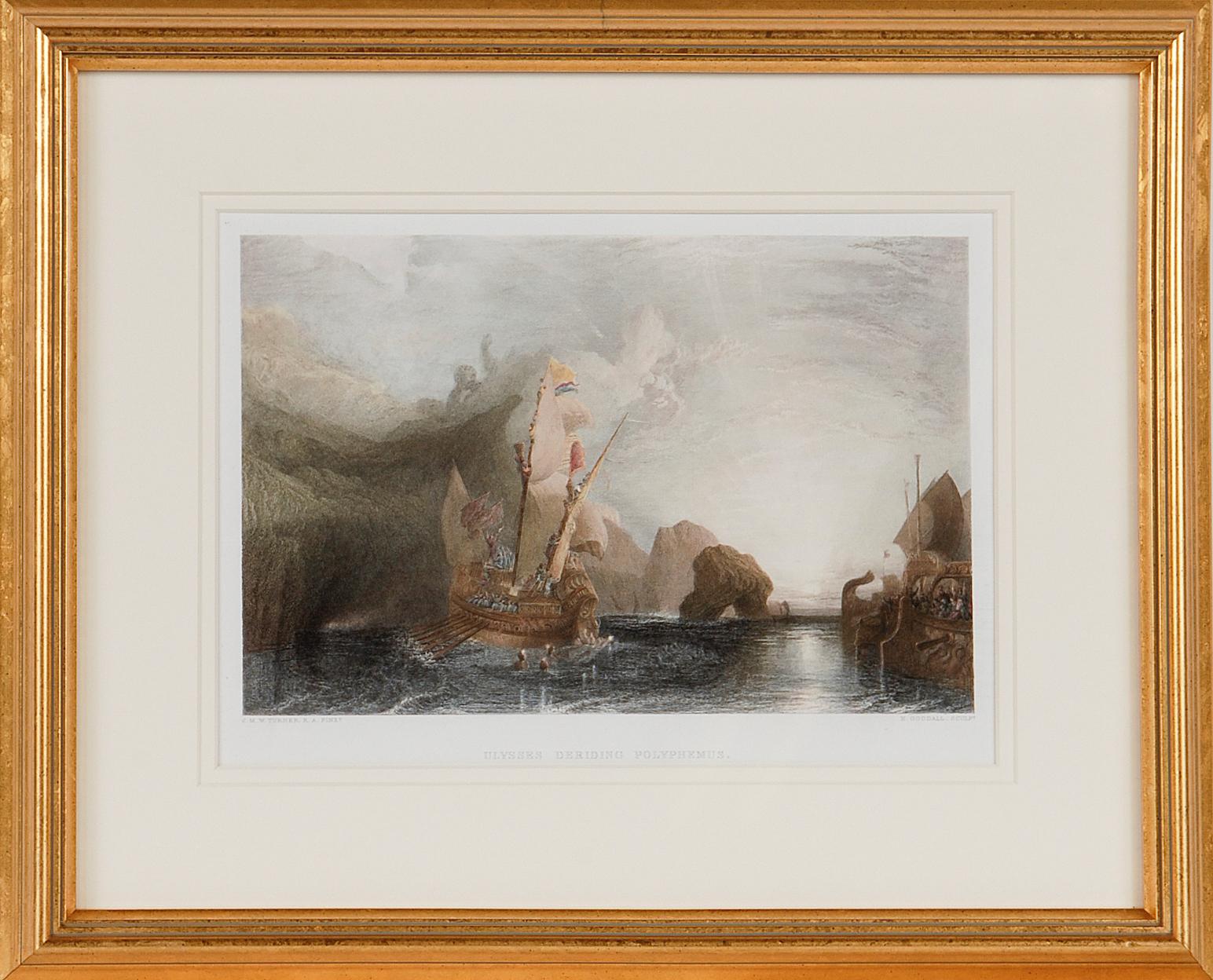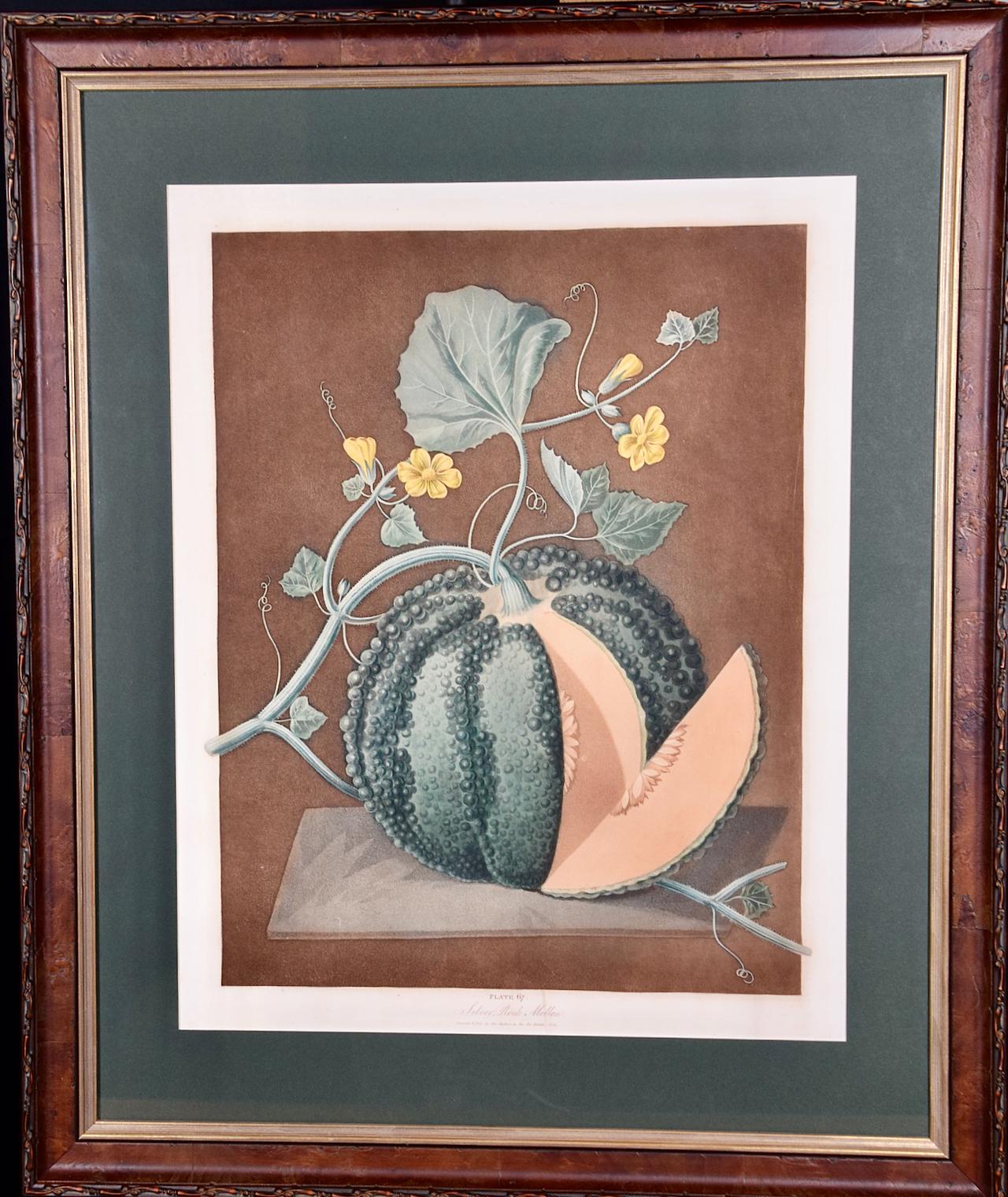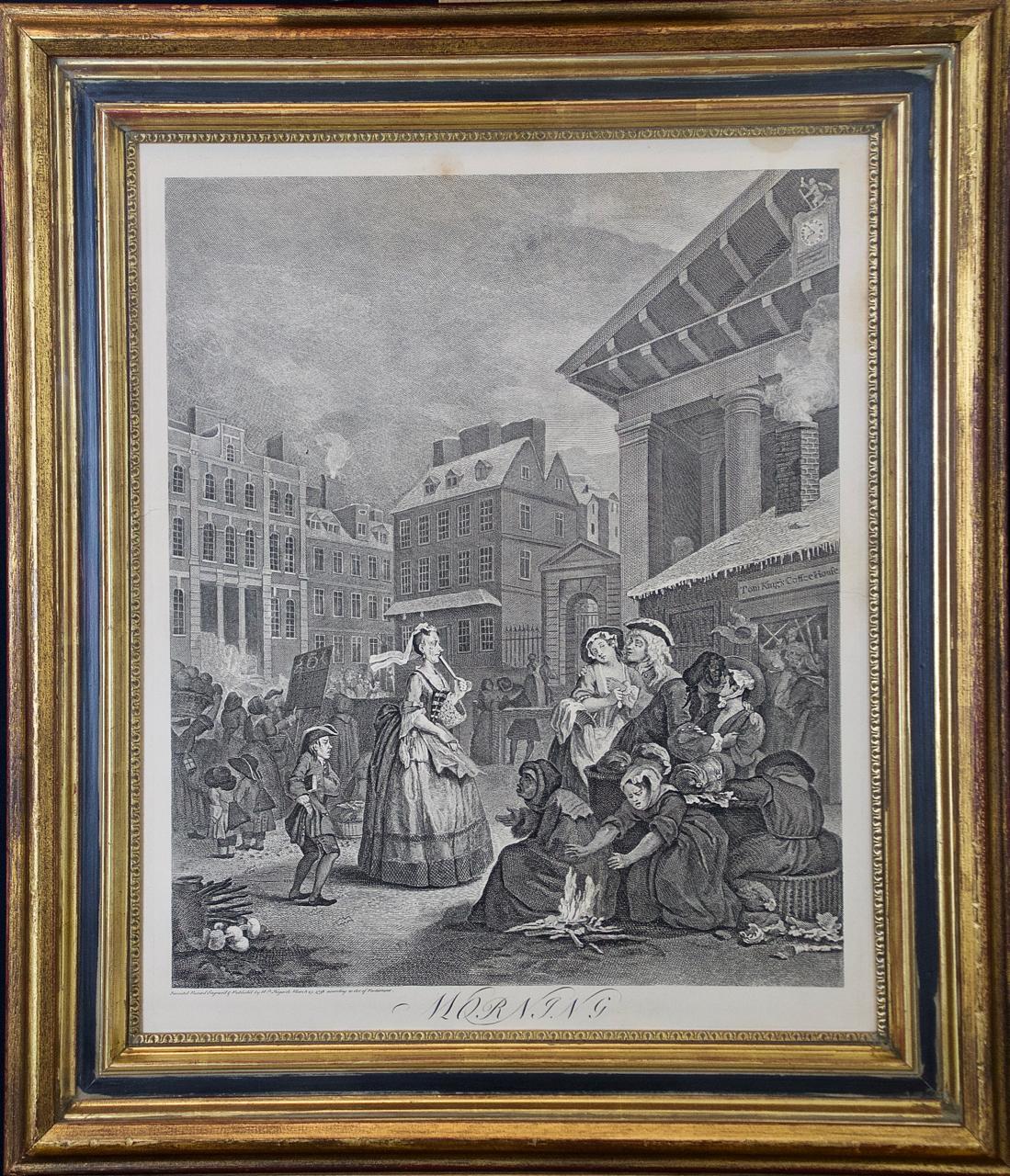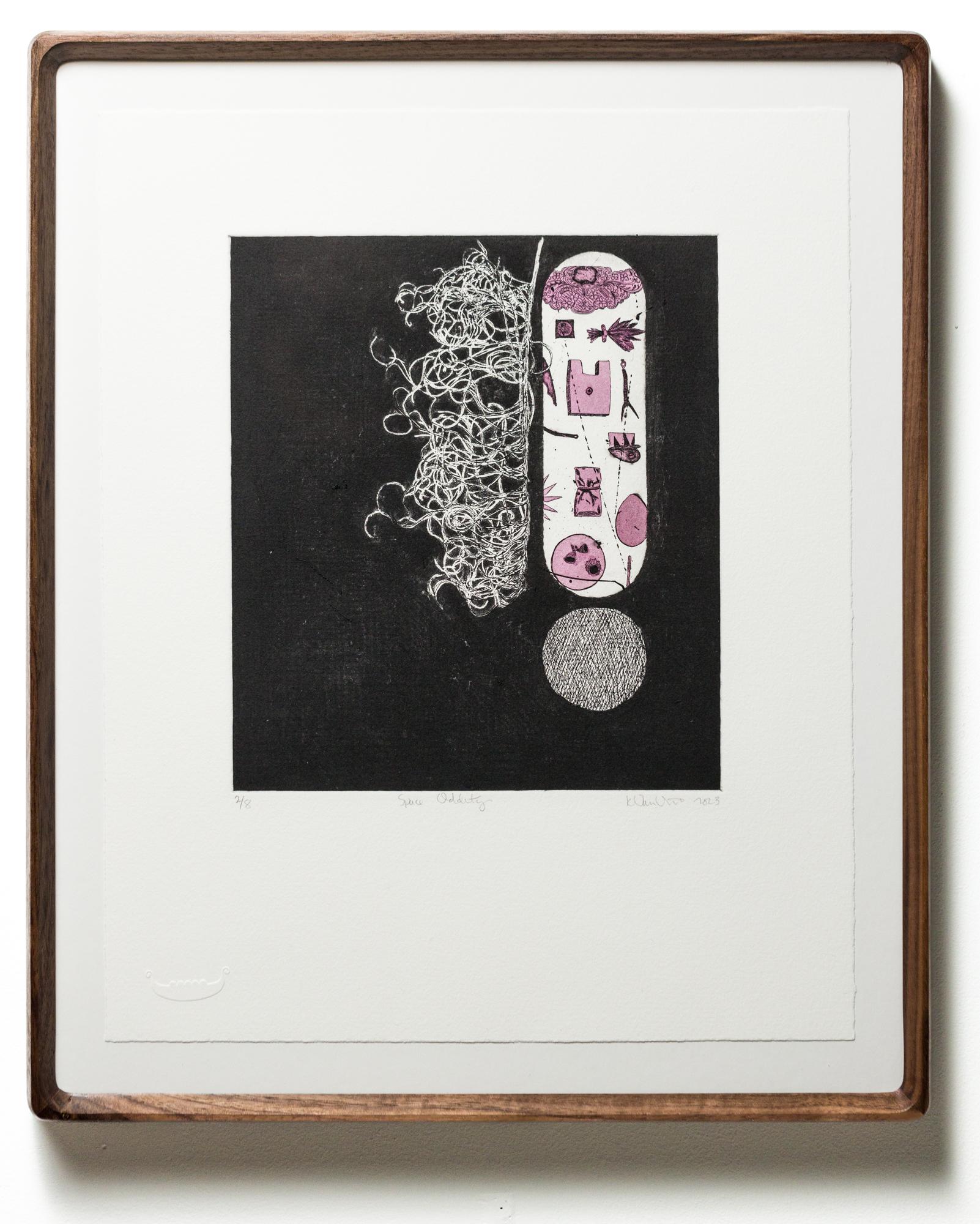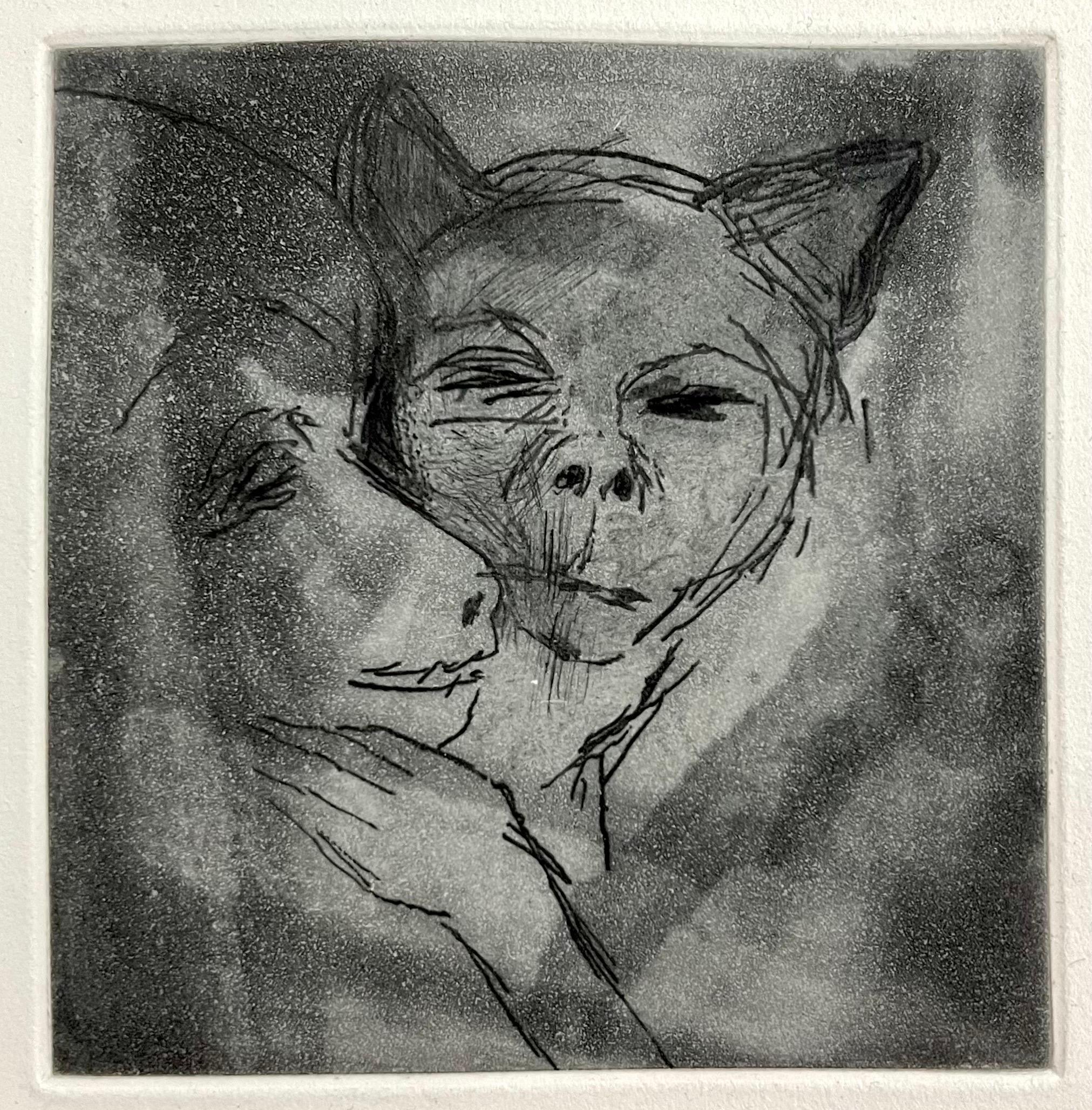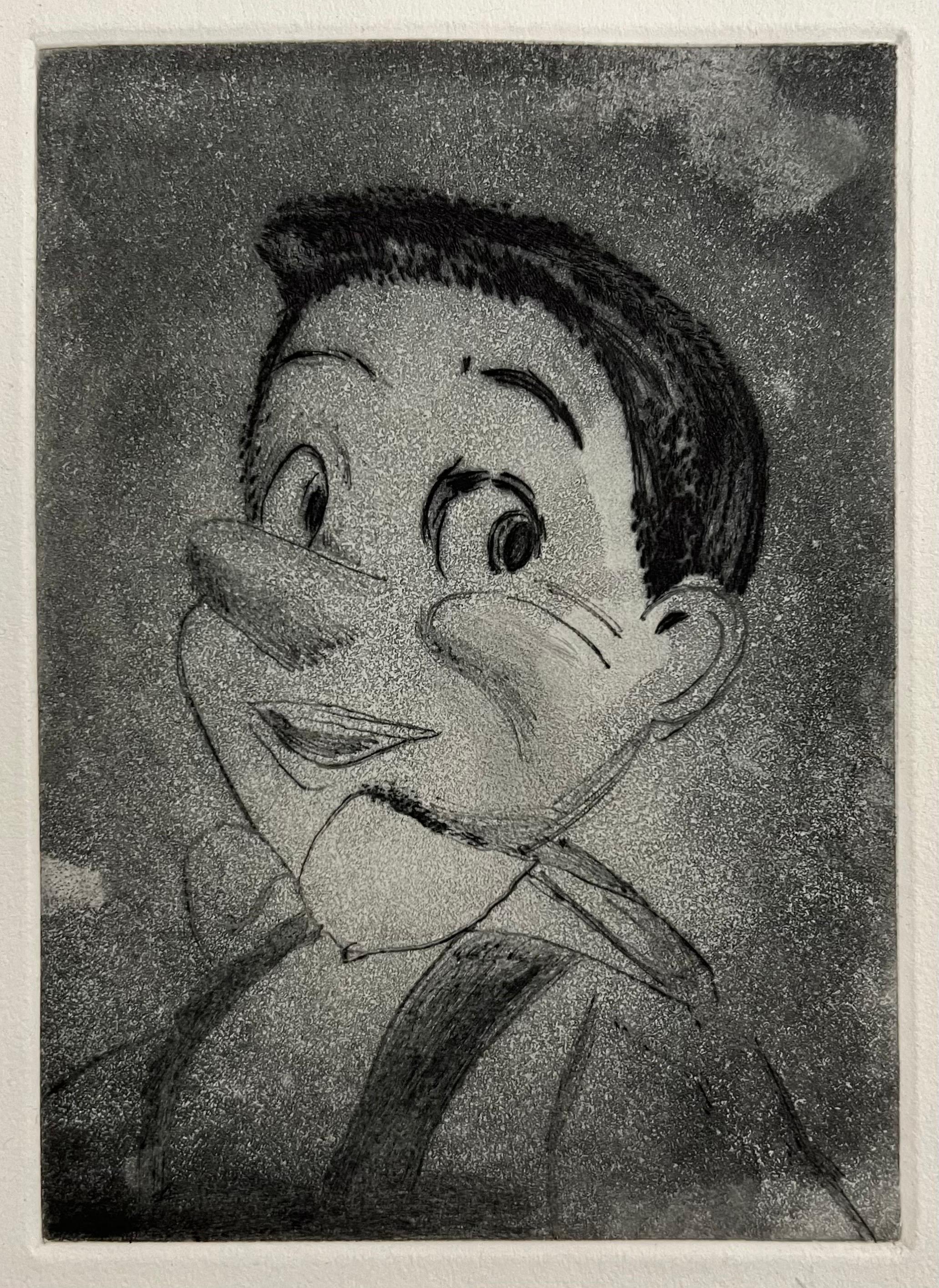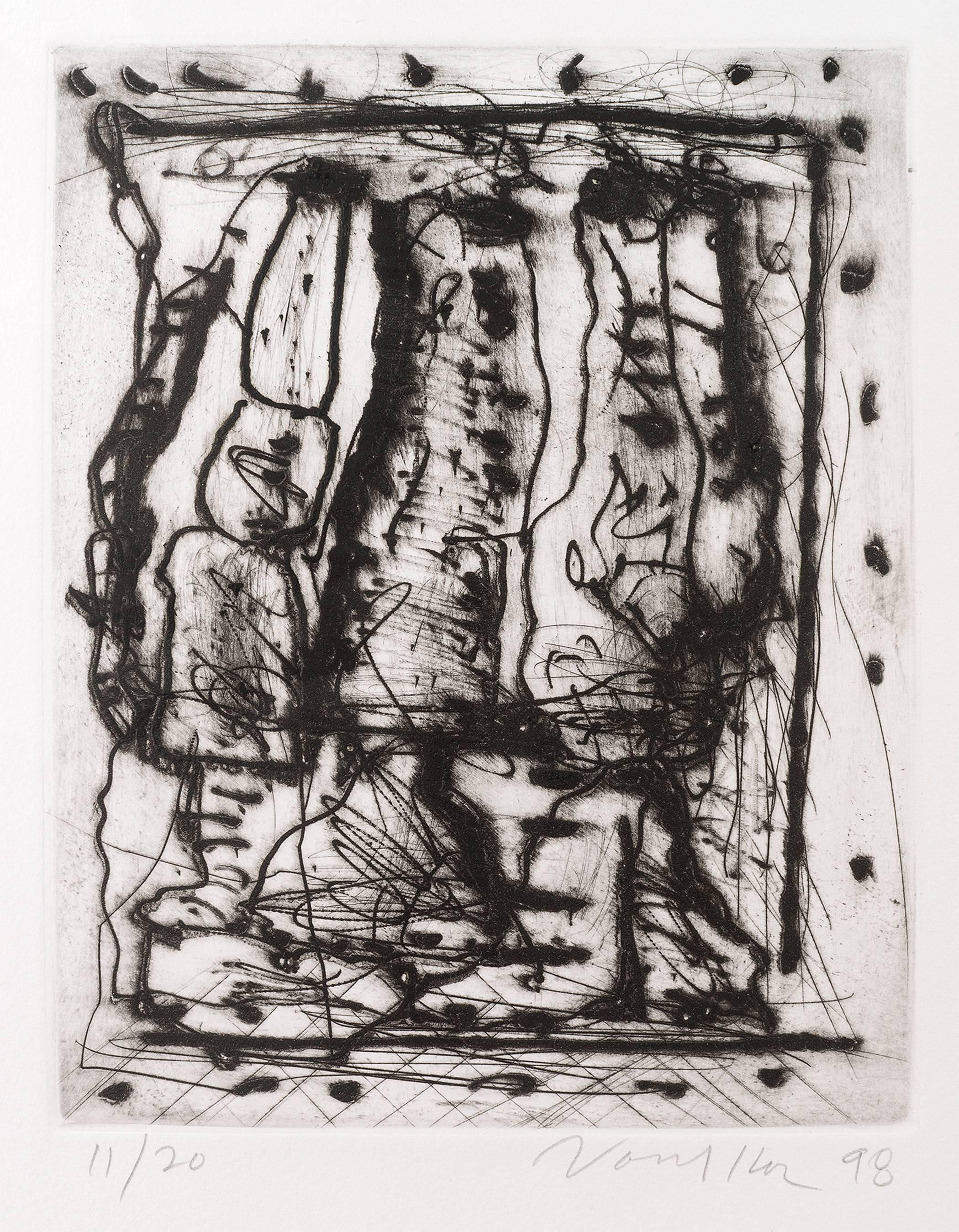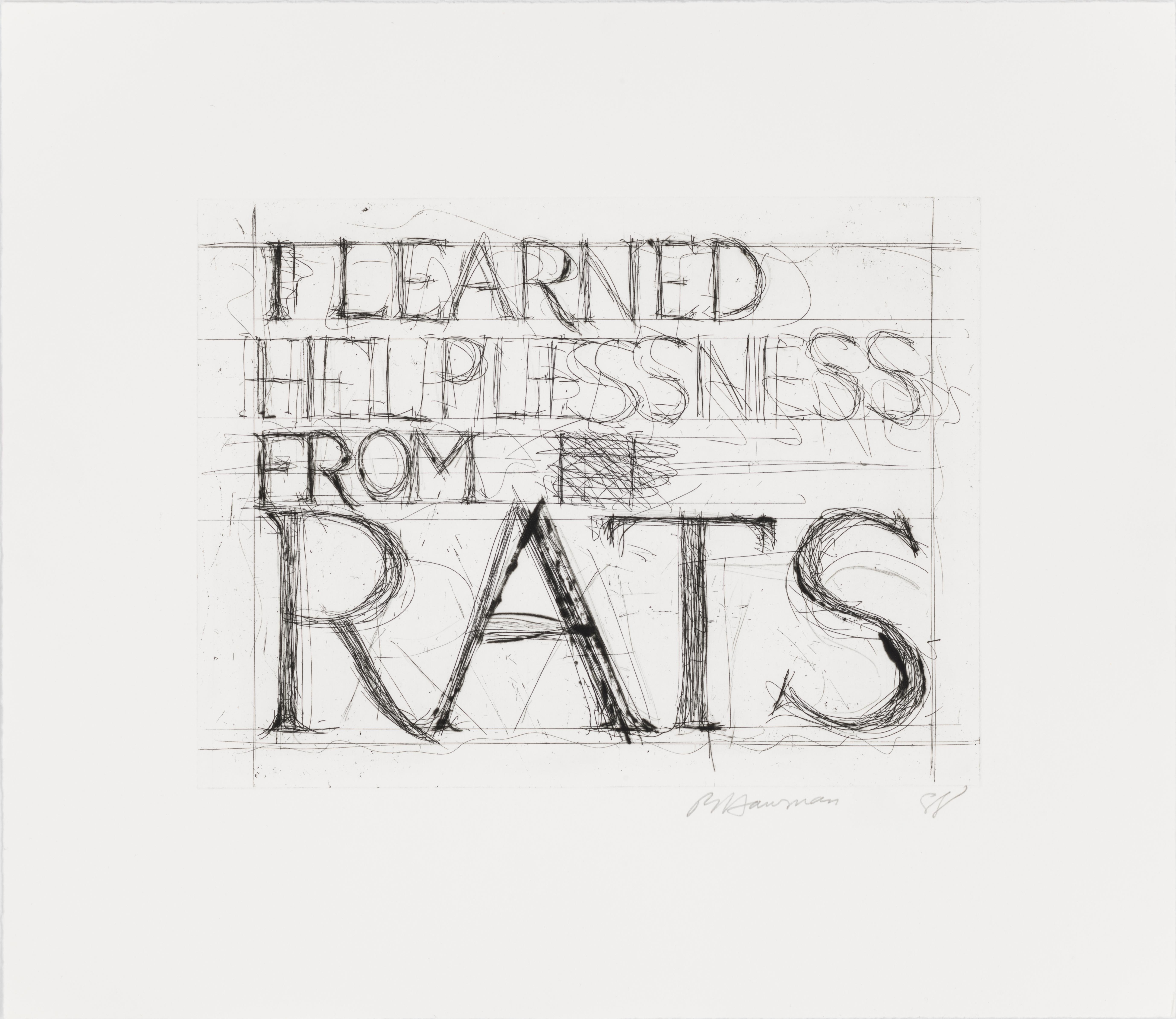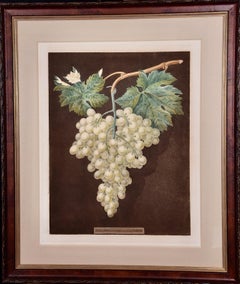
Grande corbeille de fleurs garnie de rose trémière, ancolie, pivoine, lis.
View Similar Items
1 of 5
Jean-Baptiste MonnoyerGrande corbeille de fleurs garnie de rose trémière, ancolie, pivoine, lis.
About the Item
- Creator:Jean-Baptiste Monnoyer (1636 - 1699, French)
- Dimensions:Height: 14.49 in (36.8 cm)Width: 19.3 in (49 cm)
- Medium:
- Period:
- Condition:
- Gallery Location:PARIS, FR
- Reference Number:1stDibs: LU2507213188272
You May Also Like
- Ulysses Deriding Polyphemus: A Framed 19th C. Engraving After J. M. W. TurnerBy J.M.W. TurnerLocated in Alamo, CAThis beautiful 19th century framed hand-colored engraving/etching entitled "Ullyses Deriding Polyphemus" by Edward Goodall is based on an original 1829 painting by the renowned Briti...Category
Mid-19th Century Romantic Landscape Prints
MaterialsEngraving, Etching
- Silver Rock Melon: A Framed 19th C. Color Engraving by George BrookshawBy George BrookshawLocated in Alamo, CAThis is a 19th century colored aquatint and stipple engraving finished by hand entitled "Silver Rock Melon", drawn and engraved by George Brookshaw and published in London in 1812 as plate 67 in his 'Pomona Britannica; or, A Collection of the Most Esteemed Fruits'. It depicts a Silver Rock Melon still on the vine, but the melon lies on a heater green mat. A wedge of the melon has been dissected to reveal its inner anatomy, including the seeds. The melon skin is a heather and light green color, while the inner portions are a light peach color. The vine and leaves are shown attractive shades of light green and there are soft yellow flowers. The plant is displayed on a light brown textured background with shadows to impart 3-dimensionality. The scene is reminiscent of an engraving in an 18th century artistically stylized human anatomy atlas. There are wide white margins. The title and inscription lies within the lower border. This striking engraving is presented in a reddish brown decorative wood frame with a darker brown scroll-work outer trim and a gold-colored inner fillet and a thick heather green mat. The frame measures 25.75" high, 21.5" wide and 1.13" deep. It is glazed with UV conservation glass. There is a short thin vertical line of discoloration in the lower margin through the word "melon" and a tiny spot in the upper margin on the left. The print and frame are otherwise in excellent condition. There is a second Brookshaw engraving that is framed in identical moulding, although a slightly different size and a different color mat. t depicts a cluster of grapes. The two prints would make a striking display pairing...Category
Early 19th Century Naturalistic Still-life Prints
MaterialsEngraving, Aquatint
- White Hamburgh Grape: A Framed 19th C. Color Engraving by George BrookshawBy George BrookshawLocated in Alamo, CAThis is a 19th century colored aquatint and stipple engraving finished by hand entitled "White Hamburgh Grape", drawn and engraved by George Brookshaw and published in London in 1812 as plate 60 in his 'Pomona Britannica; or, A Collection of the Most Esteemed Fruits'. It depicts a cluster of pale green grapes still on the vine. The vine and leaves are shown in attractive shades of green and brown. The plant lays on a brown textured background with shadows to impart 3-dimensionality. The scene is reminiscent of an engraving in an 18th century artistically stylized human anatomy atlas. There is a light brown title rectangle in the lower center which is blank, suggesting this may be a more rare preproduction proof. There are wide white margins. This striking engraving is presented in a reddish brown decorative wood frame with a darker brown scroll-work outer trim and a gold-colored inner fillet and a thick light beige mat. The frame measures 26" high, 22" wide and 1.13" deep. It is glazed with UV conservation glass. There is a tiny spot in the lower margin on the left and another in the left margin. The print and frame are otherwise in excellent condition. There is a second Brookshaw engraving that is framed in identical moulding, although a slightly different size and a different color mat. It depicts a Silver Rock Melon. The two prints would make a striking display pairing...Category
Early 19th Century Naturalistic Still-life Prints
MaterialsEngraving, Aquatint
- Four Framed Hogarth Engravings "Four Times of the Day"By William HogarthLocated in Alamo, CAThe four plates in this "Four Times of the Day" set were created utilizing both engraving and etching techniques by William Hogarth in 1738. Hogarth's original copper plates were refurbished where needed by James Heath and these engravings were republished in London in 1822 by Braddock, Cradock & Joy. This was the last time Hogarth's original copper plates were used for printing. Most were melted down during World War I for the construction of bombs. Printed upon early nineteenth century wove paper and with large, full margins as published by William Heath in 1822. The inscription below each print reads "Invented Painted & Engraved by Wm. Hogarth & Publish'd March 25. 1738 according to Act of Parliament". These large folio sized "Four Times of the Day" engravings/etchings are presented in complex gold-colored wood frames with black bands and scalloped gold inner trim. A majority of each thick impressive frame is covered with glass applied near the outer edge. Each frame measures 25.75" high, 22.25" wide and 1.88" deep. There are a few small dents in the edge of these frames, which are otherwise in very good condition. "Morning" has two focal areas of discoloration in the upper margin and some discoloration in the right margin, a short tear in the left margin and a short tear or crease in the right margin. "Noon" has a spot in the upper margin that extends into the upper image, but it is otherwise in very good condition. "Evening" has a faint spot in the upper margin, but it is otherwise in very good condition. "Night" is in excellent condition. The "Four Times of the Day" series is in the collection of many major museums, including: The British Museum, The Metropolitan Museum of Art, The Tate Museum, The Chicago Art Institute and The Victoria and Albert Museum. Through this series Hogarth is portraying early 18th century London street life at "Four Times of the Day". His characters are exhibiting their personalities, quircks, strange activities, but he also wants to draw attention the disparities between the wealthy aristocracy and the common working class. Plate 1, "Morning" depicts morning in Covent Garden in the winter in front of Tom King...Category
Mid-18th Century Old Masters Landscape Prints
MaterialsEngraving, Etching
- "Space Oddity", Hand-Colored Etching, Decorative MotifsBy Katie VanVlietLocated in Philadelphia, PAThis piece titled "Space Oddity" is a limited edition piece by Kate VanVliet and is made from hand-colored intaglio with drypoint, aquatint, and soft ground on Rives BFK. This piece ...Category
21st Century and Contemporary Contemporary More Prints
MaterialsDrypoint, Etching, Aquatint
- Small Beasts (Dog) Aquatint Etching Jim Dine Pop Art PrintBy Jim DineLocated in Surfside, FLJim Dine (American, b. 1935) Etching depicting a dog or wolf Published by Enitharmon Press for Whitman College, London 1999 Hand signed in pencil lower right. Measures 9" x 7" sheet size This is not numbered. from a limited edition of 30 (plus proofs). Drypoints with aquatint and spit-bite Printed by Julia D'Amario Jim Dine (born June 16, 1935) is an American pop artist. He is sometimes considered to be a part of the Neo-Dada movement.He was born in Cincinnati, Ohio. In 1953, he attended evening classes at The Art Academy of Cincinnati taught by the influential instructor, Paul Chidlaw...Category
1990s Pop Art More Prints
MaterialsDrypoint, Etching
Recently Viewed
View AllMore Ways To Browse
Grumman F6f Hellcat
Hockey Dog
Hoolock Gibbon
Vintage Dr Scholls
Vintage Lacoste Poster
Vintage Mccormick Tractors
Vintage Nz Flag
Vintage Poster Bloemen
Vintage Rcmp Posters
Warhol Pepper Pot
Colombia Vintage Travel Poster
Henry Maurice On Sale
Italian Aircraft Spotter
Le Frou Frou Vintage Poster
Michael Manwaring
Original Vintage Cuba Havana Poster
Penis Anatomy
Porte Voix Vintage
